At CES 2019 –– the massive Las Vegas event formerly known as the Consumer Electronics Show –– perhaps nothing was more indicative of how digital technology is pervading every aspect of life and industry than the fact that John Deere—the agricultural equipment giant—was a first-time exhibitor at the show.
In an interview on their booth, Lane Arthur, Deere’s director of digital solutions, said: “Next, we’ll be adding more AI [artificial intelligence] to our equipment. As our machines get smarter, we want to increase the ability for us to talk to them, and for them to talk to each other.”
Connectivity, AI, augmented and virtual reality, autonomous vehicles, drone technology, 3D printing, voice assistants, wearables and more dominated the displays and discussions.
The Jan. 8-11 CES 2019 saw more than 4,500 exhibitors showcase the latest tech innovations to an estimated 180,000 attendees across some 2.9 million net square feet of exhibit space, scattered throughout the city. Following are just a few of the many very cool products and advances seen on the show floor that had a strong plastics-related connection.
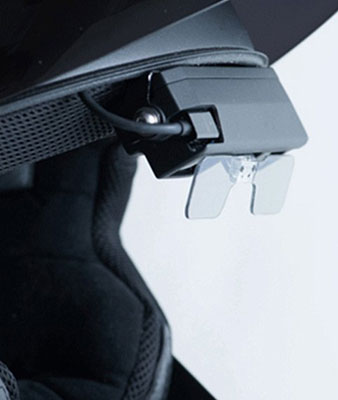
CrossHelmet X1 by Borderless Inc.
Dubbed the “world’s smartest helmet,” it was one of several helmets displayed at CES, but stood out for its sleek, beautiful design and integrated functionality.
Borderless was founded in Tokyo in 2014 as an industrial design firm by motorcycle designer Arata Oono, now the company’s CEO. Made of polycarbonate, the CrossHelmet integrates a 360-degree camera in the back, and projects the rear view onto a clear PC visor positioned above the line of sight in the front, greatly enhancing rider safety.
Launched on Kickstarter in September 2017, the product also offers sound control and noise cancellation, Bluetooth connectivity, voice commands, LED side lighting and a capacitive touchpad. The first-generation, full-face model is currently available in matte black or silver, and is expected to retail for about $1,799, lead designer Kevin Tseng (who formerly worked for Fuseproject) said in an interview.
Solar Cow by YOLK
The brainchild of South Korean designer SungUn Chang, Solar Cow cleverly leverages materials technology, the wonderment of children, and solar power with a highly desirable social goal –– to curb child labor in rural Africa and incentivize parents instead to send their poor, young kids to attend school daily. Chang, who graduated with an industrial design degree from the Art Institute of Chicago in 2010, founded Yolk six years ago in her home country. Social research was key to her Solar Cow project, as the target participants needed to value electricity but have scarce access to it.
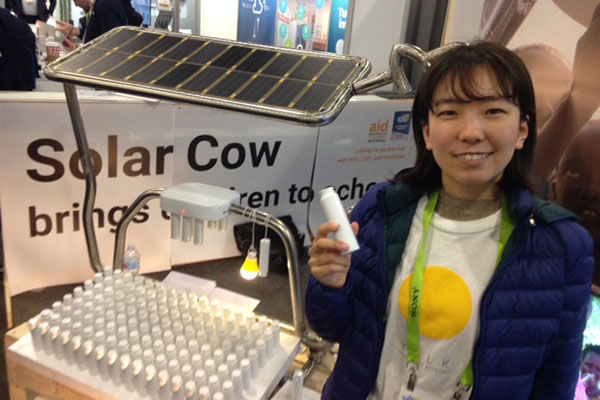
The result is Solar Cow –– a tubular steel structure in the shape of a cow (so designed “to help tell the story”), fitted with solar panels, a storage battery, and an array of 250 small, portable, lithium ion batteries dubbed Power Milk. Each student is given one personalized Power Milk, which can store 3,000 milliamps and provide four hours of use. The batteries charge in the Solar Cow during the day while the students are at school and they then can take them home at night to provide free electricity to their family.
Each white, opaque preform-shaped battery is molded out of durable polycarbonate in South Korea. Each has a unique code, linking them to particular student, so the school can digitally track exactly who attends school and when. Chang says the first Solar Cow is being installed in Kenya, and she hopes to garner financial partners, particularly governments and non-governmental organizations.
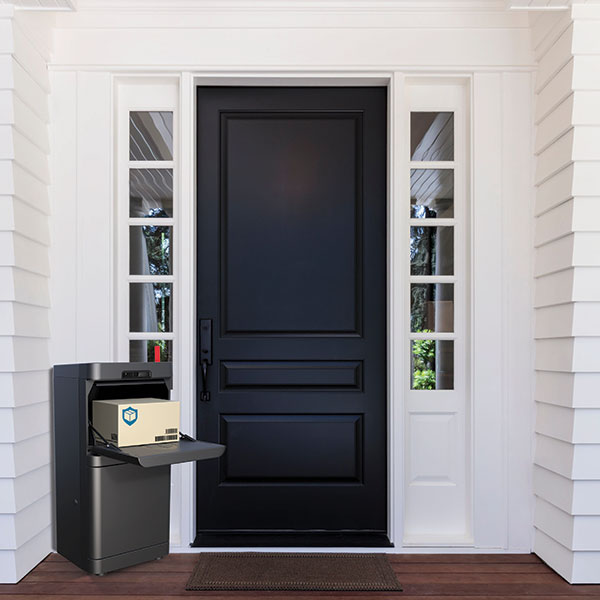
Parcel Guard by Danby Appliances
Danby Appliances introduced a rugged “smart mailbox” designed to keep delivered parcels safe from both weather and thieves. After all, notes the 72-year-old, Guelph, Ontario-based firm, more than 25 million households in the U.S. reported they had packages stolen last year.
With a body made of HDPE that is loaded carbon black to help protect the polymer against UV exposure, the Parcel Guard mailbox is roughly 19 inches wide, 16 inches deep and 39 inches tall. It can be bolted to your porch or weighted down at the bottom, and can receive parcels measuring up to 15 x 10 x 8 inches. Danby employs custom molders in Canada to make the product via low-pressure structural web molding.
The mailbox is fitted with a camera, motion sensor, electronic lock, weight monitor and tamper alarm (with a loud, car-style alarm). Users can connect to it via wi-fi and, using the related smartphone app, track the coming and going of packages. It even notifies you when someone is approaching the mailbox, and can provide a live video stream. Danby plans to launch the product commercially, priced at $399, in February.
Embr Wave by Embr Labs
One of hundreds of healthcare and wellness-related wearables showcased at CES, the Embr Wave intelligent bracelet is dubbed “a thermostat for your body.” Created by three Materials Science & Engineering students at MIT, the aluminum-bodied, wristwatch-like device uses scientifically developed waveforms to precisely stimulate a person’s thermoreceptors, leveraging the body’s natural systems to make the wearer feel cooler or warmer by 5 degrees F. in just a few minutes.
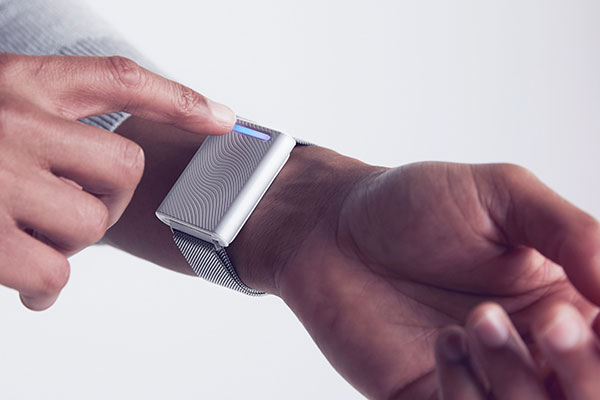
The higher density of temperature-sensitive nerve endings on your wrist makes it the perfect spot, according to Embr Labs CEO and co-founder Sam Shames. Precisely calculated algorithms are designed to deliver temperature sensations in “waves,” giving the body more consistent relief than a hot pad or an ice pack could. It’s been shown effective in 89 percent of users, according to researchers at UC Berkeley.
Embr Labs, a Somerville, Mass.-based startup, developed the patent-pending technology through years of iterative prototyping and customer testing. When it came time for the production design, the company wanted to use a frosted light pipe with LEDs as the primary user interface.
“We turned to Covestro to help select the right material and optimize the design for optical performance,” said Shames. Embr –– which stands for Environment, Mind, Body Resonance –– chose Makrolon® 2407, a UV-stabilized grade of polycarbonate and then compounded diffusers and optical brighteners into the resin to achieve the desired visual effect. (See a brief Core77.com interview with Sam Shames at https://youtu.be/sjyQl6H0jCE).
Embr Labs began selling the device last March for $299 each, and it comes with a money-back guarantee since it does not work effectively on every person.
Edge lighting by Covestro
Speaking of Covestro, the Germany-based advanced materials firm used a small light box on its CES stand to demonstrate a cool visual effect with PC resin made possible through some of its own design and engineering work.
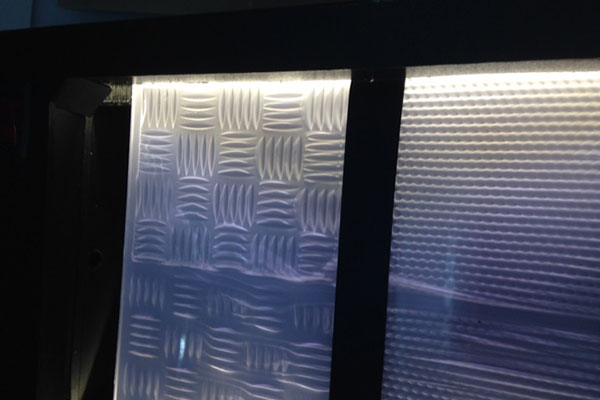
What appears to be a smooth, plain plastic slab springs to life when lit on the edges, revealing eye-popping geometric shapes and textures, even to resemble leather grain. Covestro refers to it informally as “hidden till lit.” But how?
First, a texture is created on the tool surface, which is imparted onto the opaque part via injection molding, explains Mark Torgerson, Pittsburgh, Pa.-based technical marketing manager for mobility. A second, clear or translucent shot is then molded over the opaque texture, creating a smooth, easily cleanable top surface. This application highlights a couple key attributes of PC-based materials –– excellent transparency and surface replication, according to Torgerson.
Nemeio by LDLC Group
This endlessly configurable keyboard won a 2019 CES Innovation Award in the Computer Peripherals category. By using a simple piece of software, a single keyboard can be used to write in different alphabets, have multiple software shortcuts at hand and, more broadly, integrate all the desired computer commands into the keyboard.
The e-paper screen features clear polycarbonate keys, all in a rugged ABS frame finished to look like brushed aluminum, according to R&D Director Laurent Faivre. The 81-key keyboard weighs just 600 grams. The firm is launching an Indiegogo crowdfunding campaign and expects to begin production by March.
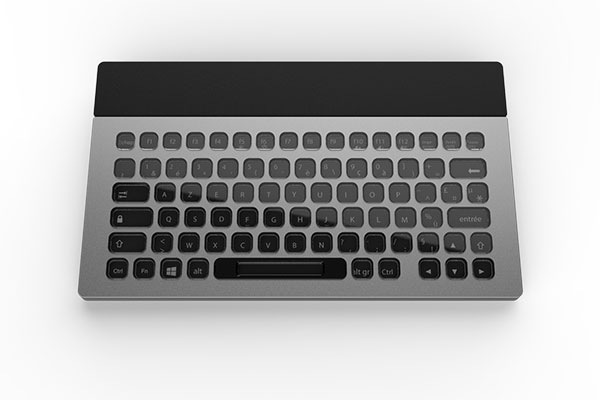
Further reading:
- LEDs and Plastics Help Light the Way for Tomorrow’s Vehicles
- K Show Recap: From Bioplastics to ETPs
- K Show Recap: Medical Polymers in the Spotlight
The views, opinions and technical analyses presented here are those of the author or advertiser, and are not necessarily those of ULProspector.com or UL Solutions. The appearance of this content in the UL Prospector Knowledge Center does not constitute an endorsement by UL Solutions or its affiliates.
All content is subject to copyright and may not be reproduced without prior authorization from UL Solutions or the content author.
The content has been made available for informational and educational purposes only. While the editors of this site may verify the accuracy of its content from time to time, we assume no responsibility for errors made by the author, editorial staff or any other contributor.
UL Solutions does not make any representations or warranties with respect to the accuracy, applicability, fitness or completeness of the content. UL Solutions does not warrant the performance, effectiveness or applicability of sites listed or linked to in any content.



Leave a Reply or Comment